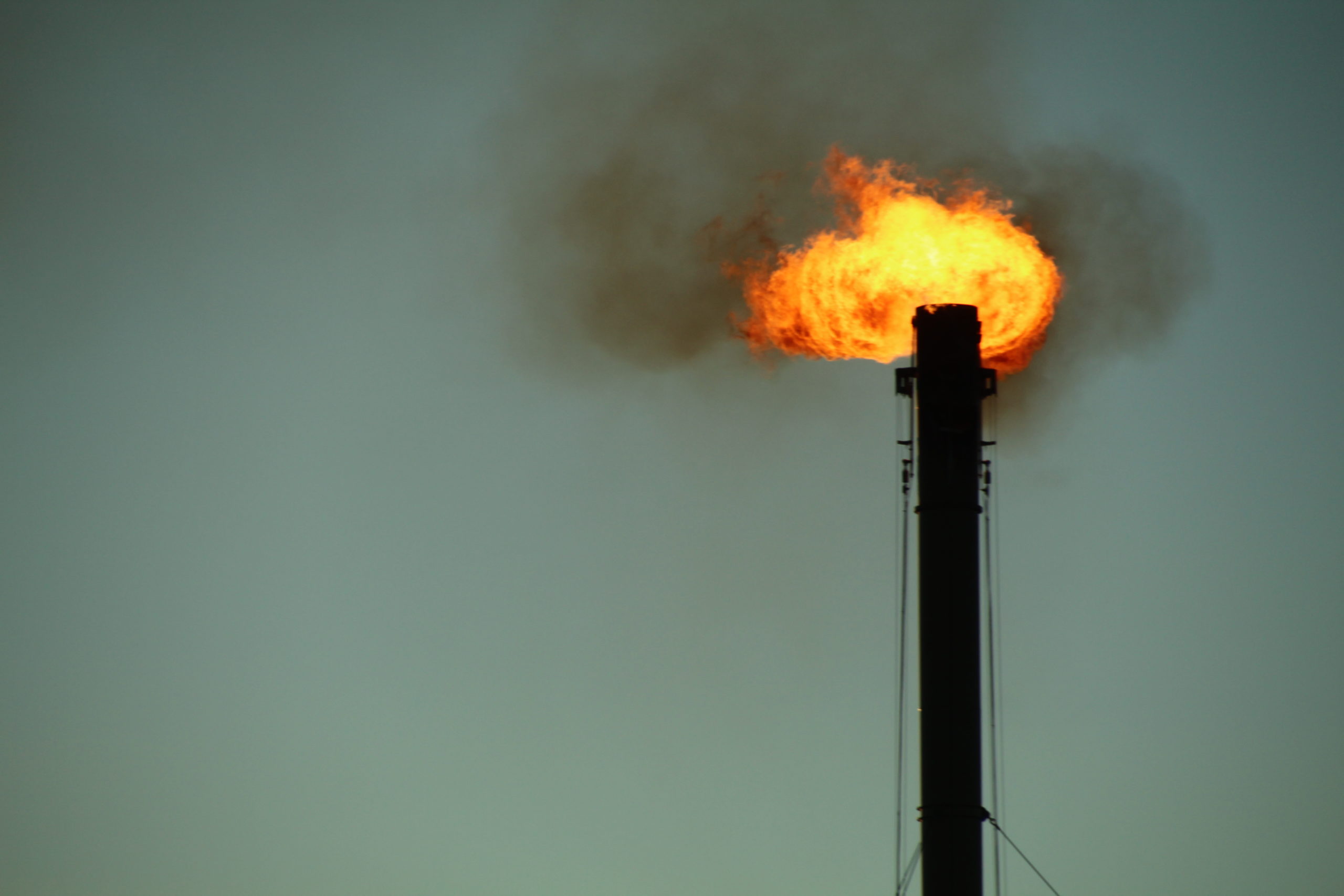When natural gas is produced as a byproduct of oil extraction or presents a safety problem operators will often vent or flare the gas. These prodigal practices pollute our air, contribute to climate change, deprive states and individuals of revenue and waste the recovered resource.
Flaring
Flaring is the practice of burning gas that is deemed uneconomical to collect and sell. Flaring is also used to burn gases that would otherwise present a safety problem. It is common to flare natural gas that contains hydrogen sulfide (i.e., sour gas), in order to convert the highly toxic hydrogen sulfide gas into less toxic compounds.
Flares emit a host of air pollutants, depending on the chemical composition of the gas being burned and the efficiency and temperature of the flare. Flaring results in hydrogen sulfide emissions if hydrogen sulfide is present in large enough amounts in the natural gas. There may also be additional by-products formed if some of the chemicals used during the drilling or hydraulic fracturing process are converted to a gaseous form and are burned along with the natural gas.
The Ventura County Air Pollution Control District, in California has estimated that the following air pollutants may be released from natural gas flares: benzene, formaldehyde, polycyclic aromatic hydrocarbons (PAHs, including naphthalene), acetaldehyde, acrolein, propylene, toluene, xylenes, ethyl benzene and hexane. Researchers in Canada have measured more than 60 air pollutants downwind of natural gas flares.
In a 2014 investigation of flaring of natural gas in the nation’s two most prolific shale oil formations, North Dakota’s Bakken Shale and Texas’ Eagle Ford Shale, Earthworks found that North Dakota oil companies have flared more than $854 million of natural gas since 2010, and state officials do not track how much money companies owe in taxes for the gas. The report found that Texas does not tax flared gas at all, pointing to the need for more stringent measures to reduce flaring in both formations and raising questions about whether North Dakota officials will enforce recently issued regulations to control flaring.
Venting
Venting is the direct release of methane gas to the atmosphere. Venting occurs at a number of points in the oil and gas development process (well completion; well maintenance; pipeline maintenance; tank maintenance; etc.).
During oil and gas development, huge quantities of gas may vent to the atmosphere. For example, during well completion, after a well is fracked, the wellbore and surrounding formation must be cleaned out. The solids and fluids from the well go into pits, while the gases are allowed to escape into the atmosphere, or they are burned off (flared). It has been estimated that a single well in Wyoming’s Jonah field will emit 115 tons of VOCs, and 4 tons of hazardous air pollutants such as benzene, toluene, ethylbenzene, xylene and hexanes. If the gas is flared, rather than vented, the emissions of VOCs and HAPs are reduced to 29 and 1 ton, respectively; but flaring of completion gases also results in the release more than a ton of nitrogen oxides, and almost half a ton of carbon monoxide per well.
The primary component of natural gas is methane, which is odorless when it comes directly out of the gas well. At gas processing facilities, chemical odorants such as mercaptans are added to methane, so that consumers are able to smell it in the event of a gas leak. In addition to methane, natural gas typically contains other hydrocarbons such as ethane, propane, butane, and pentanes. Raw natural gas may also contain water vapor, hydrogen sulfide (H2S), carbon dioxide, helium, nitrogen, and other compounds. If the concentration of H2S in the gas is high enough, there may also be a “rotten egg” odor associated with the gas.
Flareless ‘Green’ Completions
In flareless or green completions the gas that comes to the surface is separated from fluids and solids using a series of heavy-duty separators (sometimes referred to as “flowback units”). The water is discharged to tanks to be reused, the sand is sent to a reserve pit, and the gas is either cycled back through the well bore, or sent to a pipeline to be sold rather than vented or flared.


